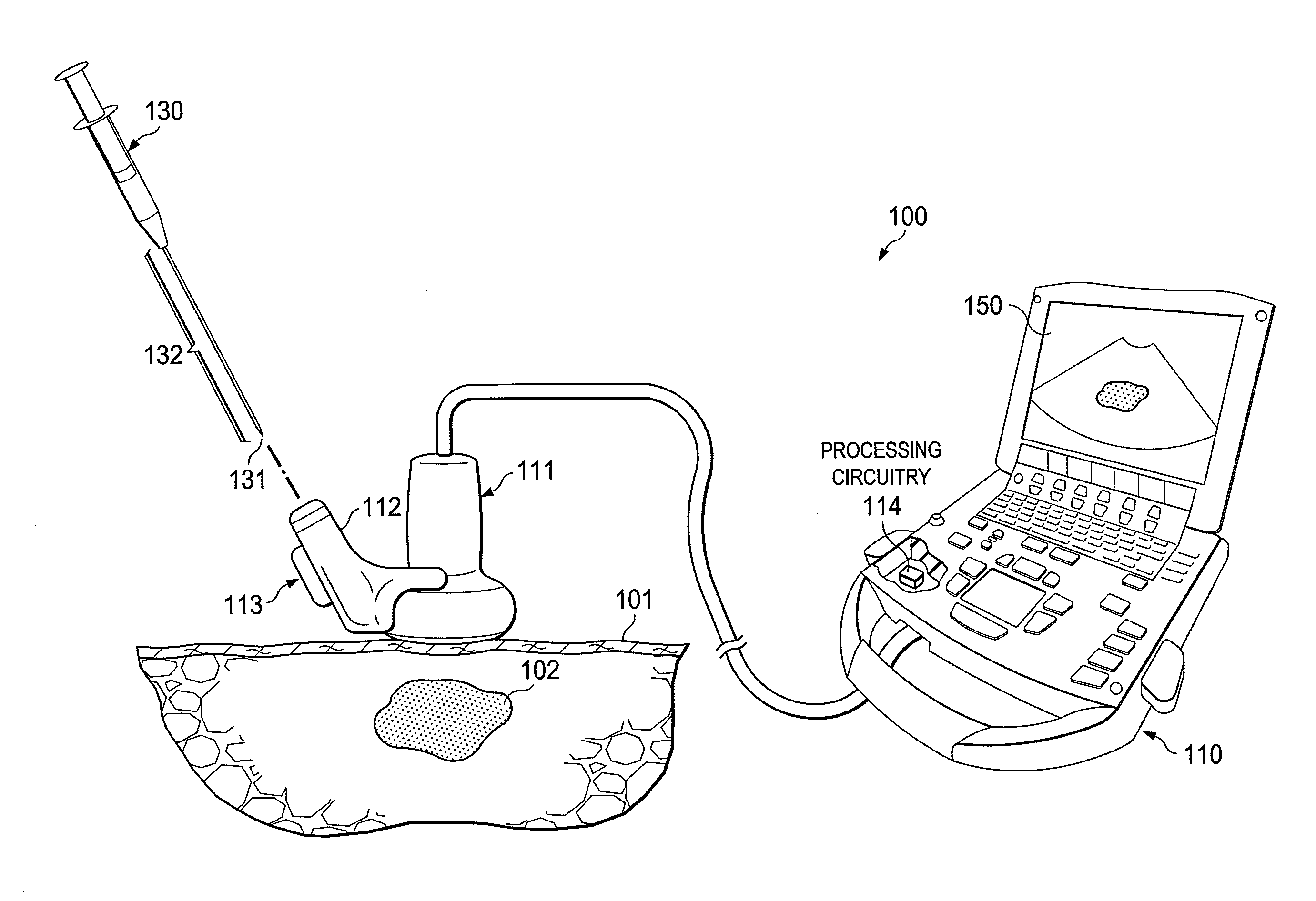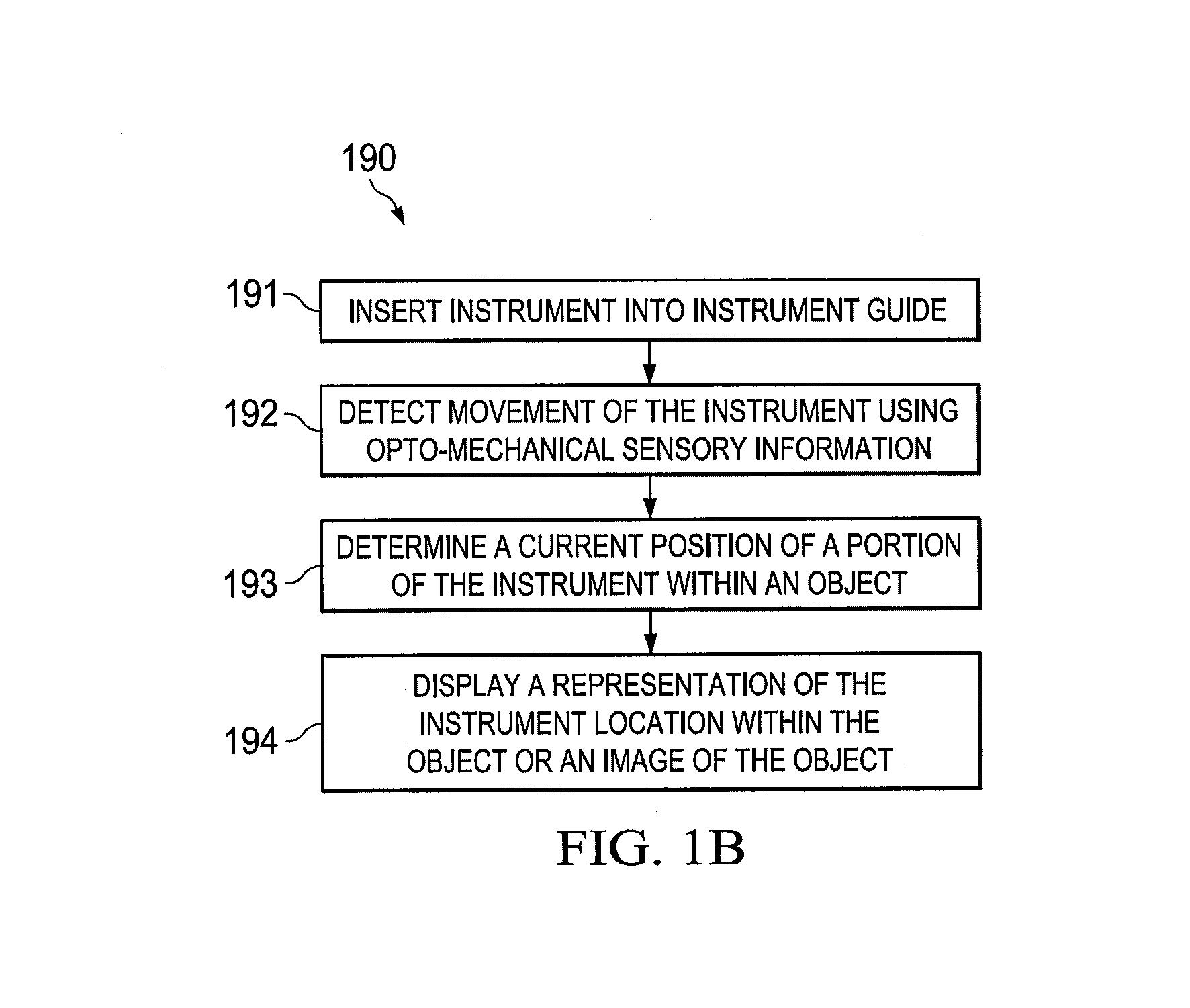Systems and methods for assisting with internal positioning of instruments
a technology of internal positioning and imaging, applied in the field of internal procedures, can solve the problems of difficult identification of instruments within real-time ultrasound images, complex and expensive equipment, and difficult capture and display in ultrasound images, etc., to facilitate high-resolution movement detection, facilitate improved movement detection, and facilitate the effect of simple configuration
- Summary
- Abstract
- Description
- Claims
- Application Information
AI Technical Summary
Benefits of technology
Problems solved by technology
Method used
Image
Examples
Embodiment Construction
[0034]FIG. 1A shows an imaging system adapted according to an embodiment of the invention to determine the position of an instrument (such as a needle, catheter, stent, endoscope, angioplasty balloon, etc.), or a portion of an instrument (e.g., a needle tip) within an object using an opto-mechanical sensor system configuration. Specifically, imaging system 100 of FIG. 1A, such as may comprises an ultrasound imaging system, is adapted for use in providing real-time images for facilitating positioning a portion of instrument 130 within object 101. For example, instrument 130 may comprise a needle or other interventional instrument for insertion into object 101, such as may comprise a human body, for interfacing with one or more objects therein, such as target 102 (e.g., a cyst, tumor, blood vessel, nerve, etc.), during an interventional procedure (e.g., biopsy, injection, line insertion, etc.).
[0035]The term real-time as used herein, such as for real-time images, is intended to encomp...
PUM
 Login to View More
Login to View More Abstract
Description
Claims
Application Information
 Login to View More
Login to View More - R&D
- Intellectual Property
- Life Sciences
- Materials
- Tech Scout
- Unparalleled Data Quality
- Higher Quality Content
- 60% Fewer Hallucinations
Browse by: Latest US Patents, China's latest patents, Technical Efficacy Thesaurus, Application Domain, Technology Topic, Popular Technical Reports.
© 2025 PatSnap. All rights reserved.Legal|Privacy policy|Modern Slavery Act Transparency Statement|Sitemap|About US| Contact US: help@patsnap.com



